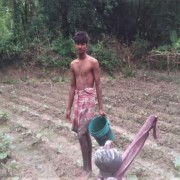Speeches Shim

In mid-May 2020, while people in India were grappling with the lockdown in response to the COVID-19, farmers in the states on the east coast braced for a second threat – the cyclone Amphan.

During the COVID-19 pandemic, USAID programs working in outbreak hot spots in India provide crucial assistance to urban slum dwellers.

As TV anchors across India began reporting that COVID-19 cases were rapidly rising in India, Jayata, a Community Health Officer (CHO) posted at the Bimbong Health and Wellness Center in the north-eastern state of Sikkim, became alarmed. “By the time it reached India, I knew it was no ordinary flu virus. It had already spread rapidly to every country in the world. I became really worried.”

“Care for everyone and always have each other’s back.” These are the values that Anusha (who, like many in her community, goes by only her first name) grew up with. She is a Community Health Officer (CHO) at the Phongla Health and Wellness Center in Sikkim, a small, mountainous state in the northeast of India. Like other states in India and across the globe, health providers in Sikkim are working to protect their communities from the COVID-19 pandemic while continuing to provide the essential primary health services their patients depend on.

These days, Dr. Thanghoi Lam, the State Program Officer for Health and Wellness Centers in Nagaland, a small and remote state in northeastern India, barely leaves his office. The fear and panic surrounding COVID-19 has recently taken hold in Nagaland and Dr. Lam wants to make sure the state is fully equipped to deal with the pandemic.

Comment
Make a general inquiry or suggest an improvement.